Review for Witchblade - Collector's Edition
Introduction
With Witchblade, we get to the last of the four vintage Gonzo anime that MVM have been bringing out on Blu-ray the last few months. Admittedly I’m a little late with this review, but anime review discs are light on the ground these days, and I want to savour them, rather than rush through as I used to. But my tardiness means that while the first four titles were released as collector’s editions, MVM are now getting around to re-releasing them as cheaper standards. So if you don’t like rigid artboxes, booklets and artcards and the like, just discs in a pseudo-Amaray, then Burst Angel will be out in April, while Trinity Blood and Samurai 7 are up for pre-order. Thankfully, Witchblade’s Collector’s Edition is all that’s on the site at the moment. I’d feel sheepish reviewing it if you could click on a cheaper edition already...
Witchblade is a comic book creation from Top Cow studios in the US, a slightly more mature title in the Dark Knight vein, which saw homicide detective Sara Pezzini come into possession of the Witchblade, a mystical gauntlet that bonds with its female owner, gifting her with tremendous powers and abilities. It’s selective in who it chooses, a main priority being that the wielder has to look good naked, for when its powers are called upon, clothing vanishes to be replaced by a judiciously placed set of armour, grown organically from the gauntlet. Experts in action anime Gonzo have taken the Top Cow comic book and given it a Tokyo makeover, and for this new incarnation of the story, gone is Sara Pezzini, and in comes Masane Amaha, with an even scantier costume that would make sailors blush. Cleavage of all sorts abounds, jiggle is judiciously applied, and all in the name of the great goddess Fan Service, while beneath it all is a decent story, with interesting and well-written characters.
Set in the near future, the Witchblade has passed to a new owner, Masane Amaha. Six years previously, after the great earthquake had decimated Tokyo, Masane and her daughter Rihoko were found at the epicentre of the quake. Masane lost her memory, and all she had left was her daughter. When they return to the ruins of Tokyo to rebuild their home and start afresh, they find that the world is a far different place, as they have to avoid the attentions of the NSWF who are after the Witchblade, and its subsidiary Child Welfare Agency who have an interest in Rihoko. However, soon after Masane’s abilities manifest, she’s discovered by Douji Industries. Douji and NSWF were partners in researching the Witchblade six years ago, and Douji still think of the Witchblade as their property. They also feel obligated to clear up the mess that resulted from that catastrophe, including the release of dangerous killer X-Cons into the city, bio-machines that the Witchblade is ideally suited to deal with. Douji winds up employing Masane, using her abilities, and keeping her away from the NSWF. It’s just that the NSWF have made strides in replicating Witchblade technology for themselves…
24 episodes of Witchblade, plus extras are presented across 3 Blu-rays from MVM.
Disc1
1. Beginning
2. Bewilderment
3. Defiance
4. Movement
5. Search
6. Change
7. Passage
8. Reciprocity
9. Sadness
10. Interaction
Disc 2
11. Danger
12. Prisoner
13. Separation
14. Family
15. Bonds
16. Relaxation
17. Confusion
18. Turn
19. Feelings
20. Request
Disc 3
21. Vow
22. Inform
23. Chaos
24. Light
Picture
Witchblade gets a 1.78:1 widescreen 1080p transfer for this release. It is an early, Funimation upscale of the SD source, and this was back when Funimation were really massaging the visuals to create a faux-HD experience. On the whole, it’s agreeable enough, clear and sharp, with bright and vibrant colours. The trouble is that the faux HD usually comes through aggressive DNR, and sharpening, and as it’s done via an algorithm, rather than frame by frame by humans (which would take so long you might as well animate it anew from scratch), then there will be moments where the algorithm breaks, and you get fine detail actually scrubbed from the image, or some line art actually looking smeared. Moreover, there are 30fps elements to the animation (notably the second end theme song) which introduces judder when reduced to the 24fps of 1080p.
The sad thing is that on average, Witchblade looks pretty good, but the bits that step out of the average are jarringly obvious. Also the first taste is with the eyes, and Witchblade begins with a flashback/dream sequence with a whole lot of visual effects and faux grain to it, which all steps outside the aesthetic of the rest of the series. This sequence does not react well to the upscale, and is pretty close to broken. It’s the worst first impression to the show, even if it is less than a minute out of the 600. Still, we do get a progressive 24fps playback as opposed to the NTSC-PAL standards conversion of the UK DVDs.
Sound
You have the choice between Dolby TrueHD 5.1 Surround English, and Dolby Digital 2.0 Stereo Japanese with optional translated English subtitles and signs. Yes, you read that right. Witchblade on Blu-ray comes with the same lossy Japanese audio track that was on the DVDs. Once you start listening, that fact is forgettable, as the audio is good enough to listen to, but if you are upgrading to Blu-ray, you’ll want the best possible audio experience. This is also one of those early Funimation Blu-rays that gets the thin white subtitle font that is so, so easy to lose against busy backgrounds, that often it’s easier just to watch the dub. The subtitles are accurately timed and free of typos.
Extras
The discs present their content with animated menus.
All of the extras are on disc 3, and they collect the extra features which were split across the six DVDs that were released in the UK originally. I thought those discs were generous with the extra features, but it turns out that we actually missed out on six Inside Top Cow featurettes. That’s one of the niggles with having PAL content taking up more space on a DVD compared to NTSC content, extras used to get compromised. That’s not as much of a problem with Blu-rays, and we get it all here.
Japanese Cast Interviews x8 (66:19)
The Witchblade Forged Parts 1-3 (54:04)
Inside Top Cow Featurettes x8 (67:54)
Textless Credit (2xOP and 2xED)
Japanese TV Spots (1:21)
Promotional Video (1:54)
As you can see, there is over three hours of extra content, and that is a lot more than we usually get with anime releases, no doubt down to the US source material and collaboration.
Conclusion
Let’s get the double-dip quandary out of the way first. If you own Witchblade on DVD, should you get the Blu-ray? Normally that’s an easy question to answer, but this time it’s more nuanced. How much of a Witchblade anime fan are you? If you absolutely love this show, then you’ll at least want those extra features that the UK DVDs missed out on. It is an early Funimation upscale, but you’re still balancing an over-processed Blu-ray versus UK NTSC-PAL standards conversion; a compromise either way. If you prefer the dub, then that makes it easier, as you at least get a better audio experience with lossless sound. But you gain nothing with the Japanese stereo if you’re an original audio fan, and the subtitles are actually worse, harder to read than the DVD. If you prefer the Japanese, then I’d buy the Blu-ray for the extras, but keep watching the DVDs. Of course if you originally bought the Region 1 Funimation DVDs, then it’s not even an issue, and you can just keep those.
However, if you’ve yet to experience Witchblade, then I can comfortably say that this Blu-ray release, despite its niggles, is a must buy anime. It’s one of the earlier collaborations between a US comic and a Japanese animation studio, and they find the perfect balance between doing justice to the original premise while making a damn fine anime as well. Rather than simply give the original story an anime polish, Studio Gonzo and Top Cow have instead moved the story into a near future, keeping the Witchblade premise, but with a whole different cast of characters, and with a story that plays to Gonzo’s strengths at the time, the multi-genre cyberpunk mix, mysteries and conspiracies, and a whole lot of fan service.
To be honest, it even feels like a typical anime at first glance, when it comes to the story structure and style, and particularly the characterisations. And if the cliché of bad-ass women licking their blades is too much for you, then maybe avoid the Witchblade anime. There is fan service galore with the costume designs, more than a few perverted characters, and there is even a swimsuit episode at the beach. So far, so typical for an anime.
The story is really compelling though, set in a world where the ancient Witchblade is the ultimate weapon, coveted by all. One corporation, Douji Industries, want to reverse engineer the Witchblade and use the technology to turn the dead into living, cybernetic weapons. Another, NSWF is creating Cloneblades, empowering women with inferior copies of the Witchblade, coupled with a perverse Eugenics programme initiated by the company’s “Father”. When NSWF and Douji once collaborated, the Witchblade went out of control and was lost, in the middle of a disaster that wrecked Tokyo.
In the ruins, an amnesiac woman, the protagonist Masane Amaha was found, along with her baby daughter Rihoko. It turns out that the Witchblade chose Masane during that disaster, and now that Masane and Rihoko have returned to Tokyo, the Witchblade is coming out of dormancy, triggered by Douji’s runaway experiments, and NSWF’s Cloneblades. And the Witchblade is compelling Masane to fight, to satiate her growing bloodlust, even while Douji’s experiments continue, and NSWF continue to produce more Cloneblades.
There’s plenty of room for action in between the usual Gonzo comedy shenanigans, but the show also takes a big step away from usual anime clichés, taking a page from Western comic storytelling as well. For one thing, the protagonist is an adult, as opposed to the usual high school teens we get in most such shows. On top of that, Masane actually has a relationship with another adult. It’s a proper romance, leaning towards romantic comedy at one point. You don’t see too many of those in anime.
More impressive is that the heart of the show is actually the mother daughter relationship between Masane and Rihoko, and it’s really well done. They do flip it in some aspects, Masane can be childish, and is a little too fond of alcohol, to the point where Rihoko is often looking after her mother. But the love is there, and all that Masane does is to give Rihoko a better life. The story effortlessly develops this relationship, often tugging at the heartstrings with the adversities mother and daughter have to face. I’d defy anyone to keep a dry eye towards the end of the series, when the consequences of bearing the Witchblade become apparent, and Masane has to have that heartbreaking conversation with Rihoko that terminally ill parents have to have with their young children.
Over time, a big issue for anime collectors becomes the re-watchability of series. What might be the best thing since sliced bread the first time you watch it, might not sustain. For example, I only enjoyed Excel Saga the once. But when it comes to Witchblade, this is actually the sixth time I have seen it, and while some of the early episodes tend to the usual Gonzo clichés, and can feel a little cookie cutter, once the story really takes hold, Witchblade is just strong as it has ever been, and it’s conclusion just as powerful. This is one of the best shows to come from Studio Gonzo, and is well worth picking up.
The Witchblade Collector's Edition is available direct from MVM's webshop, Anime Online and United Publications, as well as all the usual mainstream retailers.
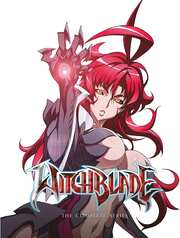
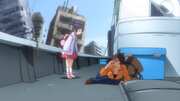
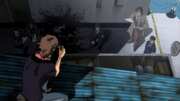
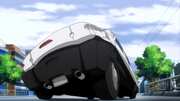
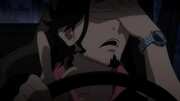
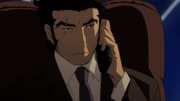
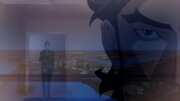
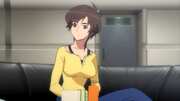

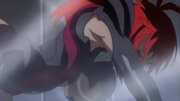
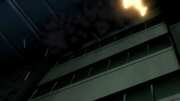
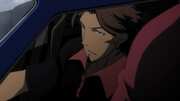
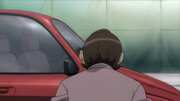
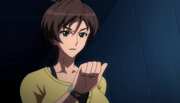
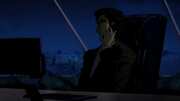
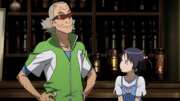
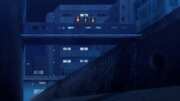
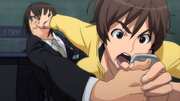


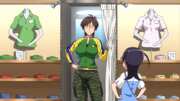
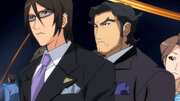
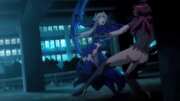
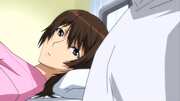
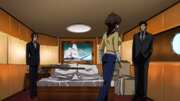
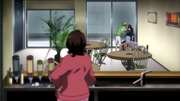
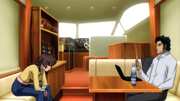

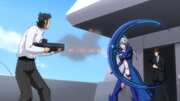
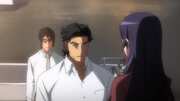
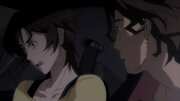



















































Your Opinions and Comments
Be the first to post a comment!